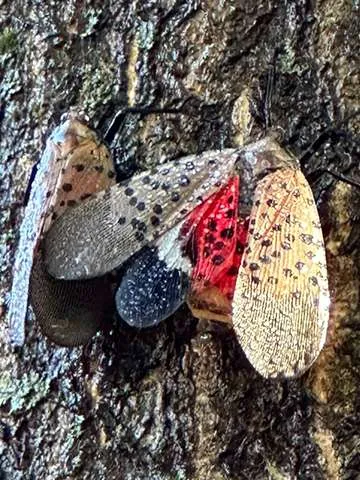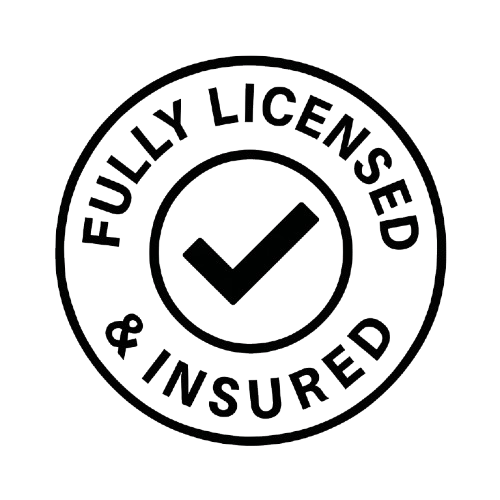Using Tree Pruning and Removal to Combat Spotted Lanternflies

The spotted lanternfly is an invasive insect that has quickly spread across New York City, inflicting considerable harm to trees and plants. This pest presents a major risk to local ecosystems, especially since it targets numerous tree species. As a homeowner or property manager, it’s important to take proactive measures to safeguard your trees from this destructive insect. Two of the most effective ways to manage spotted lanternflies are through tree pruning and, in more severe cases, tree removal. Understanding Spotted Lanternflies The spotted lanternfly (Lycorma delicatula) is native to Southeast Asia but has become a major pest in the United States, particularly in the Northeast. It feeds on tree and plant sap, which weakens the host and makes it more susceptible to disease. The insect’s feeding habits leave behind a sticky substance called honeydew, which promotes the growth of sooty mold. This black, sooty mold not only damages the tree but can also cover outdoor surfaces, making it a nuisance for homeowners. The spotted lanternfly has a one-year life cycle, with adults laying eggs in the fall. Egg masses are found on tree trunks, branches, and even man-made structures. The eggs hatch in the spring, and the nymphs begin feeding on a variety of plants before becoming adults in late summer. Pruning as a Preventative Measure Pruning plays a vital role in managing spotted lanternflies, particularly in the early stages of infestation. By removing infested branches, you can reduce the population of lanternflies on your property and slow the spread of the insect to other trees. Focus on pruning branches that show signs of infestation, such as oozing sap, sooty mold, or egg masses. Additionally, pruning helps improve air circulation within the tree’s canopy, which can make the environment less hospitable for the pests. Regular pruning also allows you to monitor the health of your trees more closely. By inspecting your trees during pruning, you can catch early signs of spotted lanternfly activity and take action before the infestation becomes severe. When Removal is Necessary In some cases, pruning alone may not be enough to control a spotted lanternfly infestation, especially if the tree is heavily infested or already weakened by the pest. Tree removal may be necessary to prevent the lanternflies from spreading to other healthy trees on your property or in the surrounding area. Tree removal is a last resort but is sometimes the only effective way to protect the rest of your landscape. When deciding whether to remove a tree, consider the extent of the infestation, the health of the tree, and its value to your property. A certified arborist from NYC Tree Pro can assess the situation and recommend the best course of action. Signs of Spotted Lanternfly Infestation Sooty mold on trees: This black mold is a sign of honeydew excreted by the lanternflies. Oozing sap: Look for sap oozing from small wounds in the tree bark, a common indicator of infestation. Egg masses on tree trunks: These are usually grayish and can be found on the bark, making them easy to spot during pruning. Presence of adult lanternflies: Adults are about an inch long, with long gray wings and black spots with bright red inside, and they often congregate in large numbers. Wilting or yellowing leaves: This can indicate that the tree is under stress from the feeding activity of the lanternflies. Comparison of Pruning vs. Removal for Spotted Lanternfly Control Method Best Used When Benefits Costs Drawbacks Pruning Early stages of infestation Preserves tree health Lower cost, typically $100-$500 May not be sufficient for severe cases Removal Severe infestation, tree decline Prevents further spread Higher cost, typically $500-$2000 Loss of tree, environmental impact Combined Approach Moderate infestation Balances health and control Moderate cost, depending on extent Requires ongoing monitoring Chemical Treatment When combined with pruning Targets lanternflies directly Varies, $100-$300 per application Environmental concerns, effectiveness varies Monitoring & Maintenance After initial treatment Prevents re-infestation Ongoing cost, typically $100-$300 annually Requires regular inspections
The Challenges of Tree Trimming and Pruning in Tight NYC Spaces

Tree care in New York City presents unique challenges, particularly when it comes to trimming and pruning. The city’s densely packed buildings, narrow streets, and small backyards require a specialized approach to ensure that tree care is done safely and effectively. Navigating Tight Spaces One of the primary challenges of tree trimming in NYC is accessibility. Trees often grow in confined spaces, such as small backyards, along narrow streets, or close to buildings. This limited space can make it difficult to position ladders or bring in heavy equipment. Additionally, the proximity of buildings, vehicles, and power lines increases the risk of property damage or personal injury during tree trimming. To navigate these tight spaces, tree care professionals must be highly skilled and use specialized equipment designed for urban environments. Techniques such as rope and harness systems allow arborists to access hard-to-reach areas without the need for large machinery. This not only ensures safety but also minimizes disruption to the surrounding area. Techniques for Effective Trimming and Pruning in NYC Given the constraints of the urban environment, effective tree trimming and pruning require careful planning and execution. Here are some of the key techniques used by professionals: 1. Use of Pole Pruners and Compact Tools: In tight spaces, traditional saws and pruners may be too bulky to maneuver. Instead, arborists use pole pruners, which allow them to reach high branches without the need for a ladder. Compact chainsaws and hand pruners are also essential for making precise cuts in confined areas. 2. Strategic Pruning: When trimming trees in urban areas, the goal is often to reduce the tree’s size while maintaining its health and aesthetics. Strategic pruning involves selectively removing branches to thin the canopy, reduce wind resistance, and prevent overgrowth. This technique helps to keep the tree balanced and reduces the risk of storm damage. 3. Cabling and Bracing: For trees that are at risk of splitting or losing limbs due to their location, cabling and bracing can provide additional support and involve installing flexible cables or rigid braces within the tree to stabilize its structure and reduce the likelihood of branch failure. 4. Minimizing Disruption: In NYC, tree trimming often takes place in busy residential or commercial areas. To minimize disruption, arborists may schedule work during off-peak hours or use noise-reducing equipment. They also take care to protect nearby structures and landscaping from debris and damage. 5. Safety Precautions: Arborists use personal protective equipment (PPE) such as helmets, gloves, and eye protection to reduce the risk of injury. They also ensure that the work area is secured and that all equipment is in good working order. Common Risks When Trimming Trees in Tight Spaces Damage to Property: Improper trimming techniques can lead to branches falling on nearby buildings, vehicles, or power lines, causing significant damage. Injury to Workers or Bystanders: Tight spaces increase the risk of injury, making it essential for workers to be highly trained and to use proper safety equipment. Harm to the Tree: Without the right techniques, pruning in tight spaces can stress the tree, leading to poor health or even death. Disruption to the Surrounding Area: Tree trimming in urban areas can be disruptive to residents and businesses, particularly if noise levels are high or debris is not properly managed. Legal and Regulatory Issues: In NYC, tree trimming may be subject to local regulations, particularly if the tree is on public property or if the work affects nearby buildings. Private property there is no need for a permit. Specialized Tools for Urban Tree Care Tool Use Benefit Ideal for Cost Pole Pruners Reaching high branches in tight spots Precision without ladder use Narrow spaces, high branches $40 – $100 Compact Chainsaws Cutting larger branches in confined areas Effective without taking up space Larger branches, confined areas $100 – $300 Rope and Harness Safe positioning for tree workers Ensures safety in precarious locations High, inaccessible branches $150 – $300 Hand Pruners Precise cutting of small branches Ideal for detail work Small branches, tight spots $20 – $50 Noise-Reducing Chainsaws Cutting branches in urban areas Minimizes disruption Urban environments, close to residents $200 – $500 Conclusion Tree trimming and pruning in NYC’s tight spaces require a specialized approach that balances safety, efficiency, and the health of the tree. By using the right techniques and equipment, professionals can navigate the challenges of urban tree care while minimizing disruption to the surrounding area. If you have trees that need trimming or pruning in a confined space, contact NYC Tree Pro for expert services. Our team is equipped to handle even the most challenging tree care tasks, ensuring your trees remain healthy and your property remains safe.




